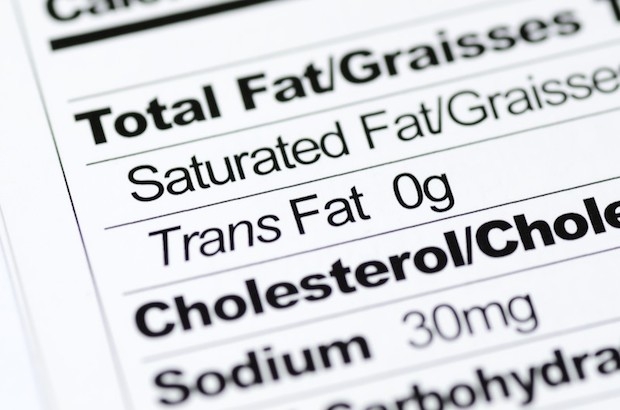I decided to write this article after seeing my mother’s dedication to buying low-fat and fat-free products. “If it’s fat-free it must be better for you,” seems to be these products’ claim to fame. But is that really true, and does fat really deserve it’s place on the “no-no list”?
The fat-free craze of the 80’s spread the message that fat is bad for you; causing all kinds of diseases and obesity. This lead to a nation wide trend of cutting back on full-fat dairy products and red meat. But if this was really true, why after years of cutting fat from our diets, and buying fat-free products are these diseases and obesity still a growing problem?
Nowadays, the advice has shifted from “Fat is Bad” to “Eat the RIGHT Fats.” Because the truth is, we NEED fat! It protects some of our joints, wards off depression, is a major source of energy, and helps your body absorb certain vitamins. The good fats can actually help LOWER LDL, are vital to blood clotting, and PREVENT heart disease. Who knew?!
What are Good Fats?
Unsaturated fats are the good fats. Unsaturated fats include the mono-unsaturates found in foods like olive oil, canola oil, and avocados, and two types of polyunsaturated fats: omega-6 (EX. safflower, corn oils, and sunflower oils) and omega-3 (EX. fish, some vegetables, nuts and seeds).
Research shows that omega-3s help prevent and even treat heart disease, stroke, lupus, eczema, and rheumatoid arthritis. Omega-6s also lower the risk of heart disease.
Don’t Over Do It! – Just because unsaturated fats are good for you doesn’t mean you can eat as much as you want. Fat is still very high in calories, so moderation is key.
What are the Bad Fats?
Saturated fats and trans fats are the bad guys. These fats increase your chances of developing heart disease by increasing LDL cholesterol and triglycerides.
Though most people think saturated fats mostly come from meat and dairy products, nowadays 40% of the average person’s saturated fat intake comes from “tropical” vegetable oils like *coconut and palm, and processed foods like pastries and cakes.
*About Coconut Oil: There are large claims about the benefits of coconut oil, and many think the benefits outweigh the risks, but one must remember that it still contains saturated fat and must be used in moderation.
Trans fats – When this fat-free buzz came into being food manufacturers were left scratching their heads. They now had to find a cheap alternative to solid fats like butter, and ta-da! man-made trans fats were born. Food chemists discovered a process called hydrogenation, which is the act of solidifying vegetable oil by heating it in the presence of hydrogen. This caused the unsaturated fat of vegetable oil to become more like a saturated fat. This is how shortening and margarine came about.
With time, it was discovered that these hydrogenated fats increased levels of trans fats which are bad for the heart and cholesterol levels. Although trans fats can be found in low levels naturally in some foods like meat, these man-made versions meant that we were exposed to them more frequently. Trans fats are found in many snack foods, processed foods, fast foods, some margarines, and packaged baked products like cookies, cakes, breads, and crackers.
The common mistakes we make when trying to cut fat from our diets:
#1: We mistakenly cut the good fats
The first things we tend to cut back on when trying to cut fat from our diets are oils for cooking and salad dressings. Remember, these oils are the good, unsaturated kind we need!
Don’t forget to eat avocados, nuts, and fish at least twice a week. All in moderation of course.
#2: We cut out the wrong bad fats
When people want to cut saturated fat they tend to greatly reduce their meat and dairy consumption. Though these foods do contain saturated fats they also contain needed protein and vitamins. It’s best to eat reduced fat options like low-fat milk, skinless chicken, and lean cuts of meat than cutting them out all together.
The saturated fats and trans fats we should cut out are the ones in processed foods like pastries and fast foods.
#3: Tricky, Tricky Food Manufacturers
Vegetable oil, olive oil, peanut oil, and canola oil in liquid forum are safe, unsaturated fats, but in an ingredient listing, vegetable oil could refer to saturated fats like coconut and palm kernel oil, or even to trans fats. Trans fats could be hidden by being called partially hydrogenated oils.
#4: A Low-Fat Label doesn’t necessarily make it healthier
- What people don’t realize about low-fat products is that by cutting the fat manufactures have to make up for the loss of texture and lack of taste in foods. They do this by increasing sugar and/or refined starches. This means that even though these products are low in fat they tend to be high in carbs, might contain trans fats, and may have just as high of a calorie count as the original high fat counterpart. Make sure to read the labels before buying.
- Because a lot of these low fat foods contain boosted amounts of sugar and refined carbs we are more likely to eat more. Our bodies digest foods that are high in sugar and carbs more rapidly. This can lead to blood sugar spikes and cravings making it more difficult to control going for seconds or thirds. Plus, fat is what makes us feel full. With the fat missing in these fat-free options it is harder to feel full causing us to eat more. Eating large quantities of these so called healthier fat-free options can be just as unhealthy as eating the full-fat version.
- The other problem with low-fat processed foods is that our brains think because they’re low in fat, it is automatically a guilt-free treat. But many packaged and processed treats don’t have much nutritional value to begin with meaning we are eating empty calories.
So, DOES fat cause disease and obesity?
I hope it’s clear by now that the bad fats (saturated and trans fats) cause disease, but unsaturated fats are good for you. I’d like to add that fat has also been linked to several kinds of cancer, but it has since been determined that it is hard to prove that fat is actually the cause given all the different elements that go into each individual’s diet.
As for weight gain, while it’s true that fat has more than twice the calories per gram than carbohydrates and proteins, it’s not the fat itself that causing weight gain, but our overall diet and portion size. The rule still applies that you’ll gain weight if you consume more calories than you burn up; so if you cut fat but still have a high calorie diet you won’t lose weight.
If you’re trying to lose weight your fat intake should be below 40 grams a day. (NOTE: 1 tbsp of any kind of oil = 20g of fat)
The Real Problem
I believe the real problem is our diets in general. We should stop focusing on one element in our foods and instead look at the big picture. The top three sources of saturated fat for Americans are cheese, pizza, and flour based desserts like cake and cookies. Research shows that there are five main risk factors in the general American’s diet: high in trans fat, high in saturated fat, high in sodium, low in fruits and vegetables, and low in omega-3’s.
Let’s wake up, and get healthy! Eat right and exercise.
Resources: sparkpeople.com, abc.net.au, Harvard Health, Fitness Magazine, Toronto Sun, bbcgoodfood





 Payments powered by:
Payments powered by:

